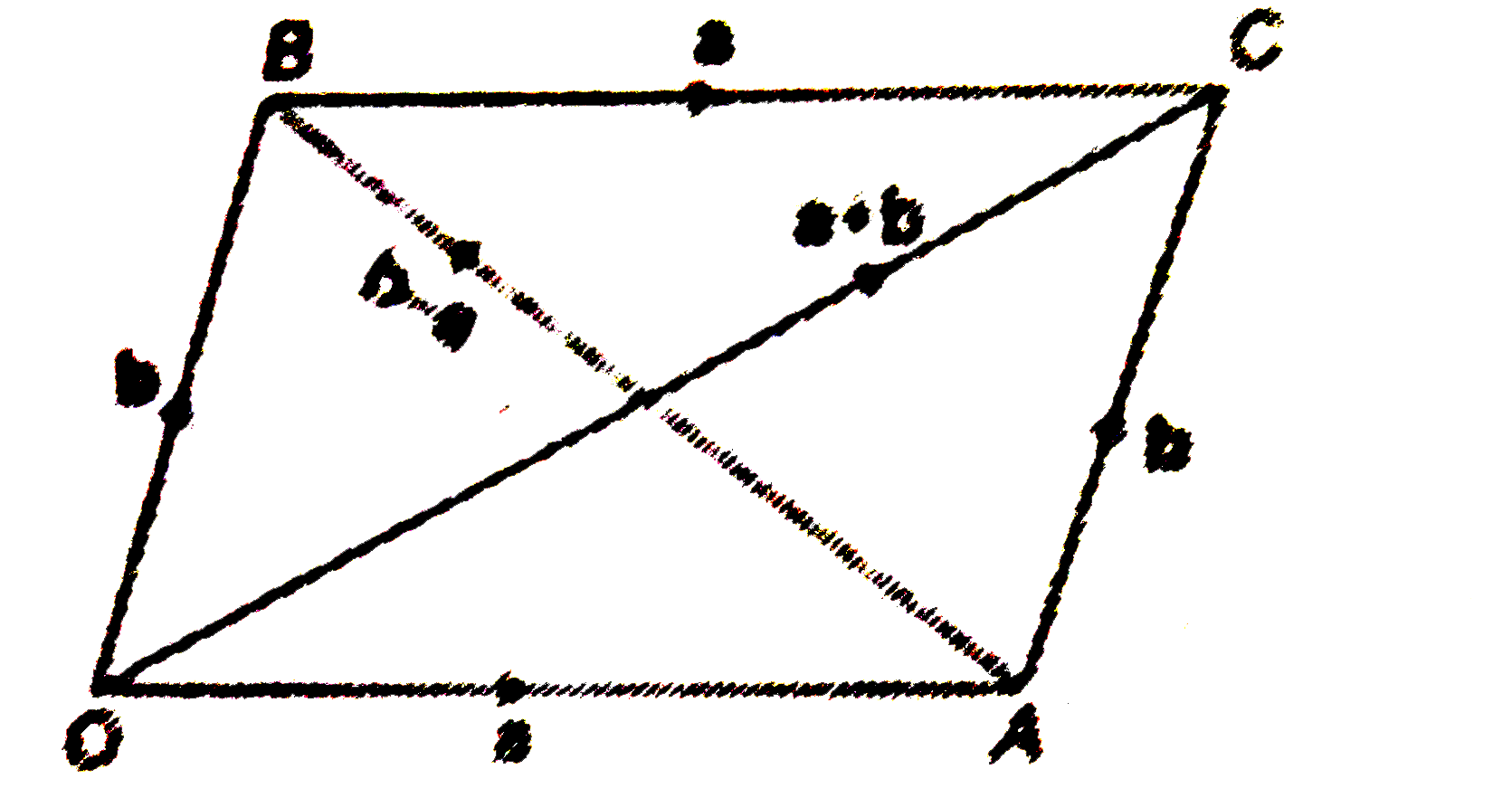The sides of a parallelogram are 2ˆi+4ˆj−5ˆkandˆi+2ˆj+3ˆk. The unit vector parallel to one of the diagonals is Solution in Gujrati
Let OABC be the given parallelogramm and let the adjacent sides OA and OB be represented by a=2ˆi+4ˆj−5ˆkandb=ˆi+2ˆj+3ˆk respectively.
Now, the vectors along the two diagonals are

The required unit vectors are
ˆ∩1=d|d1|=3ˆi+6ˆj−2ˆk√32+62+(−2)2
=37ˆi+67ˆj−27ˆk
and ˆn2=d2|d2|=−ˆi−2ˆj+8ˆk√(−1)2+(−2)2+82
=−1√69ˆi−2√69ˆj+8√69ˆk
Similar Questions
Vectors along the adjacent sides of parallelogram are →a=2ˆi+4ˆj−5ˆkand→b=ˆi+2ˆj+3ˆk. Find the length of the longer diagonal of the parallelogram.
View SolutionThe two adjacent sides of a parallelogram are given by the vectors 2ˆi−4ˆj+5ˆk and ˆi−2ˆj−3ˆk Find a unit vector parallel to its diagonal (longer). Also find the area of parallelogram.
View Solution→a=ˆi+2ˆj+3ˆk and →b=2ˆi+4ˆj−5ˆk are adjacent side of a parallelogram then find the unit vector in the direction of the diagonal of the parallelogram.
View SolutionThe two adjacent sides of a parallelogram are 2ˆi−4ˆj+5ˆk and ˆi−2ˆj−3ˆk. Find the unit vector parallel to its diagonal. Also, find its area.
View SolutionThe adjacent sides of a parallelogram are 2ˆi−4ˆj+5ˆk and ˆi−2ˆj−3ˆk. Find the unit vector parallel to its diagonal. Also find the area of the parallelogram.
View SolutionThe two adjacent sides of a parallelogram are 2ˆi−4ˆj+5ˆk and ˆi−2ˆj−3ˆk. Find the unit vector parallel to its diagonal. Also find its area.
View SolutionFind the unit vector parallel to the resultant vector of 2ˆi+4ˆj−5ˆkandˆi+2ˆj+3ˆk.
View SolutionThe unit vector parallel to the resultant vector of 2ˆi+4ˆj−5ˆkandˆi+2ˆj+3ˆk is
View Solution